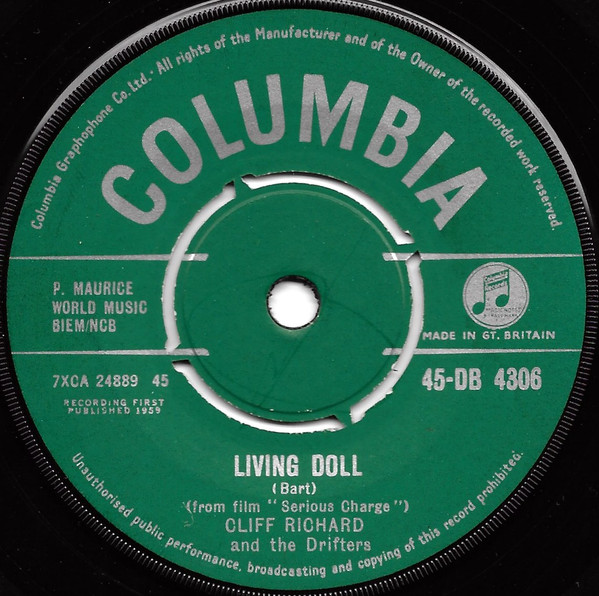Early Beginnings (Late 19th Century–1930s)
- Origins: The jukebox concept began in 1889 with coin-operated phonographs using wax cylinders, introduced in San Francisco. This technology was not widespread in the UK until later.
- Early UK Presence: Jukeboxes were rare in the UK until the 1930s, with early music boxes using paper rolls or metal discs. American influences introduced the term “jukebox” in the 1940s.
- Record Formats: Early UK jukeboxes used 78 RPM shellac records, 25 cm in diameter, limited to 3–4 minutes per side due to fragility.
The Golden Age (1940s–1950s)
- Introduction to British Pubs: In 1946, Jack Hylton introduced the UK’s first jukebox, the Music Maker Mk 1, holding 16 records. By 1947, jukeboxes spread to cities like Nottingham and Hull.
- Post-War Boom: Post-World War II, American music like jazz and rock ‘n’ roll boosted jukebox popularity. American brands entered the UK in 1954.
- Shift to 45 RPM Records: Introduced in 1948, 18 cm 45 RPM vinyl records became the jukebox standard by the 1950s due to durability and sound quality.
Peak Popularity and Cultural Impact (1950s–1960s)
- Cultural Significance: Jukeboxes were central to 1950s youth culture, playing rock ‘n’ roll, pop, and skiffle in pubs and cafés, shaping music tastes.
- Jukebox Singles: 18 cm 45 RPM singles with 3.8 cm centre holes were standard, often with codes like JB, LC, LH, or D. Some had dinked centres.
- Manufacturing and Distribution: EMI, Decca, and Pye produced jukebox singles with plain labels, using song-popularity counters to track plays.
Decline and Transition (1970s–2000s)
- Shift to CDs: By the 1980s, CDs and cassettes reduced vinyl demand. CD jukeboxes appeared in 1989, phasing out vinyl by 2000.
- Digital Era: Digital jukeboxes with internet connectivity emerged in 1998, replacing physical records.
- Vinyl Revival: In 2016, Sound Leisure’s Vinyl Rocket played 70 18 cm singles, reflecting vinyl nostalgia.
Modern Era (2000s–Present)
- Nostalgia and Collectables: Jukeboxes are now collectables or retro venue features, with Sound Leisure producing models like the SL33.
- Cultural Legacy: Jukeboxes symbolise 1950s–1960s youth culture, preserved in museums and media.
Why Not Every Variant Was Made in a Jukebox Format
- Technical Compatibility:
- Large Centre Holes: Jukebox records needed 3.8 cm holes for mechanisms. Retail records with small holes could be dinked, but this risked jamming.
- Mechanism Limitations: Limited capacity (16–100 records) meant only popular tracks were included.
- Format Constraints: 45 RPM records required specific grooves; modern reissues often lack compatibility.
- Economic Considerations:
- Cost of Production: Jukebox singles used plain labels to save costs; variants like coloured vinyl were too expensive.
- No Retail Intent: Jukebox singles lacked retail features like barcodes to focus on operator use.
- Declining Vinyl Market: By the 1990s, vinyl declined, with jukebox releases limited to popular genres.
- Market and Demand Factors:
- Popularity-Driven Selection: Only chart-topping songs were chosen for maximum plays.
- Regional Preferences: UK jukeboxes focused on rock, pop, and dance, excluding niche genres.
- Digital Transition: Digital jukeboxes eliminated the need for physical variants.
- Manufacturing and Distribution Logistics:
- Specialised Pressings: Jukebox singles required unique runs, not justified for low-demand variants.
- Operator Control: Operators chose popular records, avoiding costly variants.
- Limited Production: 1990s jukebox singles were small runs of mainstream hits.
- Cultural and Practical Shifts:
- Nostalgia vs. Practicality: Vinyl revival focused on classic re-pressings, not new variants.
- Obsolescence of Vinyl: Digital jukeboxes made physical variants obsolete by 2000.
Jukebox Buyer Resources
Jukebox Auctions – Vinyl Record Jukeboxes – CD Jukeboxes – Jukebox Records

